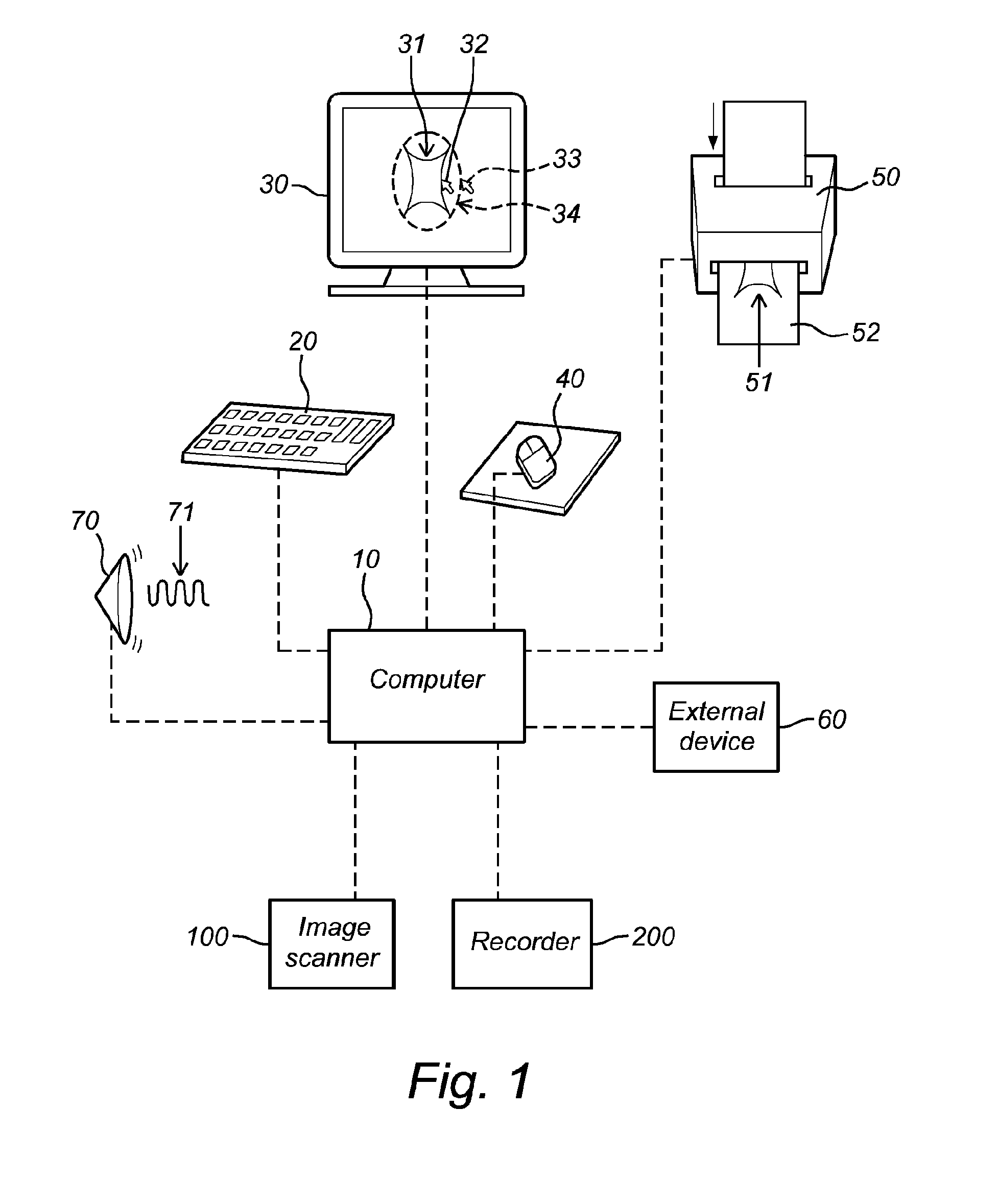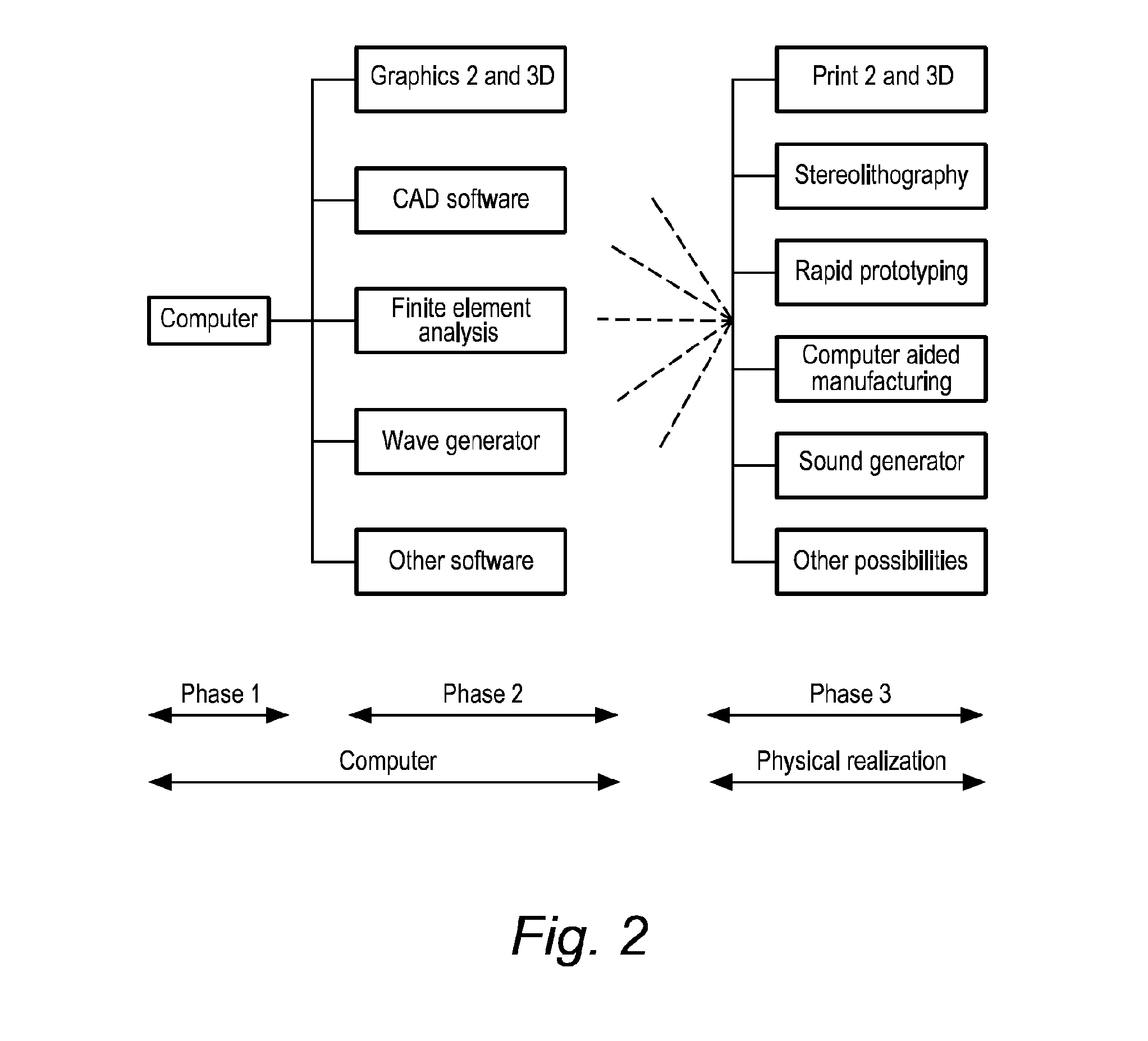Lens Antenna, Method for Manufacturing and Using such an Antenna, and Antenna System
a technology of lens antenna and antenna system, applied in the field of lens antenna, can solve the problems interference and signal disruption, and difficulty in separating transmission media from sources of electromagnetic and radio frequency interference, and in some instances impossibl
- Summary
- Abstract
- Description
- Claims
- Application Information
AI Technical Summary
Benefits of technology
Problems solved by technology
Method used
Image
Examples
Embodiment Construction
[0075]According to the first aspect, for illustrative purposes with reference to FIG. 1, which is also incorporated in U.S. Pat. No. 7,620,527 as FIG. 16, shapes or waves of a ground plane and / or a lens of an antenna according to the invention, can be “synthesized” by the application of the following exemplary basic steps:
[0076]In a first step, a choice of parameters is made (e.g., by either inputting values into the computer 10, i.e., via a keyboard 20, a touch screen, a mouse-pointer, a voice recognition device or other input device or the like, or by having the computer 10 designate values), and the computer 10 is used to synthesize a selected super-shape based on the choice of parameters.
[0077]In a second optional step, the super-formula can be used to adapt the selected shapes, to calculate optimization, etc. This step can include use of: graphics programs (e.g., 2D, 3D, etc.); CAD software; finite element analysis programs; wave generation programs; or other software.
[0078]In ...
PUM
| Property | Measurement | Unit |
|---|---|---|
| length | aaaaa | aaaaa |
| length | aaaaa | aaaaa |
| length | aaaaa | aaaaa |
Abstract
Description
Claims
Application Information
 Login to View More
Login to View More - R&D
- Intellectual Property
- Life Sciences
- Materials
- Tech Scout
- Unparalleled Data Quality
- Higher Quality Content
- 60% Fewer Hallucinations
Browse by: Latest US Patents, China's latest patents, Technical Efficacy Thesaurus, Application Domain, Technology Topic, Popular Technical Reports.
© 2025 PatSnap. All rights reserved.Legal|Privacy policy|Modern Slavery Act Transparency Statement|Sitemap|About US| Contact US: help@patsnap.com



